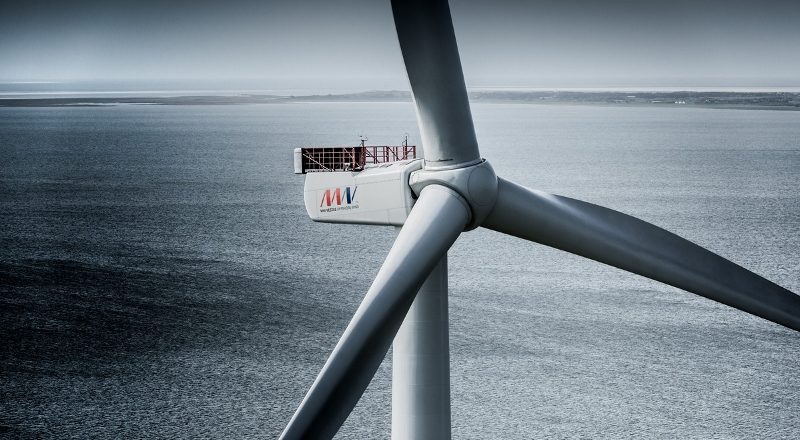A bigger, more powerful turbine now moving into the European offshore wind market is the most likely candidate for major U.S. projects just getting underway, according to builder MHI Vestas.
This week MHI Vestas and Clemson University in South Carolina announced the company’s V164 turbine, the world’s most powerful with 9.5 MW maximum output, will undergo testing and verification of its gearbox and main bearings at Clemson’s SCE&G Energy Innovation Center in North Charleston.
MHI Vestas erected 8-MW prototypes of the design in Denmark that went online in April 2016 and generate power for up to 9,000 homes. With rotor blades 538’ long and height of 656’, the new machines will be used in several North Sea projects being built through 2019.
Wind power advocates say the new generation of more powerful turbines will drive efficiency and make expensive offshore wind more competitive with other power sources – a critical progression as government subsidies phase out.

The Clemson University wind turbine test facility in North Charleston, S.C. Clemson University photo.
The Clemson testing program will develop “a better understanding of how the 9.5-MW gearbox and bearings will react over the course of a 20-plus lifecycle,” according to MHI Vestas.
“The testing and verification of the gearbox and bearings will allow us to optimize the performance and reliability of the wind turbine,” said Jakob Søbye, the company’s senior director of technology.
Overall the project represents a $35 million investment, including $23 million to Clemson over five years and the creation of a dozen jobs at the lab, university officials said. It is also MHI Vestas’ first major investment in the U.S. offshore market, as developers including DONG Energy, Statoil ASA and others are in early stages of planning offshore wind arrays from Massachusetts to Maryland.
In November 2009, the U.S. Department of Energy awarded Clemson $45 million – the largest grant in the university’s history – to build and operate the facility for testing next-generation wind-turbine drivetrain technology. Another $53 million in matching public and private funds went to build the $98 million facility and give South Carolina a place in developing the East Coast wind industry.
The 82,000-sq.-ft. facility houses both wind-turbine drivetrain testing facility and grid integration studies. It can test drivetrains on two test rigs: one up to 7.5 MW and the other up to 15 MW.
“MHI Vestas’ decision to partner with Clemson to test its most powerful wind turbine is a testament to the expertise of our faculty and staff working at the test facility,” said Robert Jones, Clemson executive vice president for academic affairs and provost in announcing the project. “The work that will be done as result of this partnership also will further Clemson’s efforts to establish the university as a leader in technologies related to the production of alternative energy sources, and hopefully will lead to further research and economic engagement opportunities for Clemson.”




